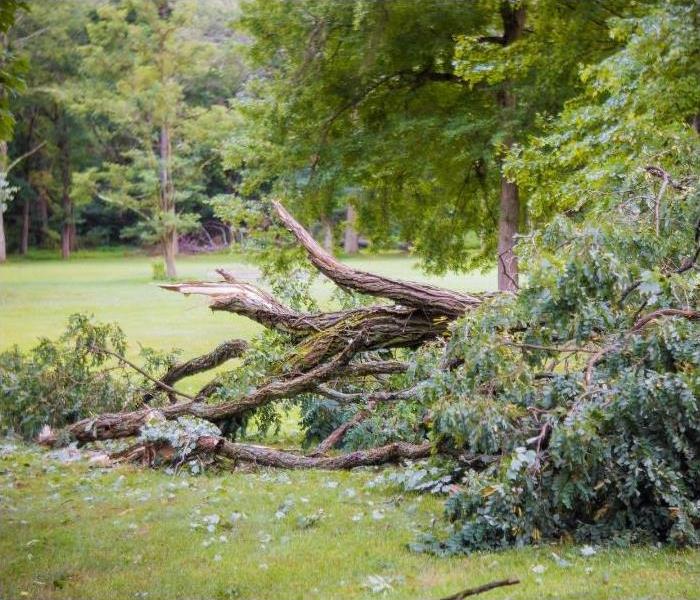Tree Removal Is a Routine Part of Storm Damage Restoration
7/10/2023 (Permalink)
Key Takeaways:
- Tree removal is an important safety measure after storms.
- Hazardous trees should be removed before a storm hits.
- Professional tree removal is the safest option.
- SERVPRO offers tree removal services as part of storm restoration.
How Important Is Tree Removal?
Trees are essential parts of our landscapes and can provide shade, beauty, and a natural habitat for wildlife. However, after a storm, trees can become dangerous and need to be removed for safety reasons. Even seemingly healthy trees can become distressed after a storm, making them vulnerable to falling branches or complete collapse. A falling tree or branch can cause serious injury or even death. Damaged trees can fall on power lines, causing power outages and other issues.
Distressed trees can pose a serious hazard and should be removed promptly, regardless of visible damage.
Removing distressed trees from your property is a crucial step in ensuring the safety of your family, visitors, and neighbors. If you’re unsure if a tree needs to be removed, contact the professionals at SERVPRO of South and Northwest Grand Rapids for an evaluation.
How Tree Removal Works
Tree removal is a complex process that should only be handled by trained professionals. The process typically involves several steps:
1. Evaluation
The first step in the tree removal process is to evaluate the tree’s health and determine the best course of action. If the tree is in immediate danger of falling or causing harm, it may need to be removed as soon as possible.
2. Tree Cutting
Once the tree has been evaluated, the tree removal team will begin cutting the tree. They’ll start by removing any large branches, then work their way down the trunk until the tree is completely cut down.
3. Stump Removal
After the tree has been cut down, the stump will need to be removed. Depending on the size of the stump, this may involve grinding the stump down or excavating it.
4. Debris Removal
Once the tree and stump have been removed, the debris will need to be cleaned up. The tree removal team will typically chip the branches and haul away the wood and other debris.
How SERVPRO of South and Northwest Grand Rapids Can Help
If your property has been damaged by a storm, the professionals at SERVPRO of South and Northwest Grand Rapids can help with all aspects of storm damage restoration, including tree removal. We have the experience and equipment necessary to safely and efficiently remove damaged trees from your property. We’ll evaluate the tree’s health, determine the best course of action, and handle all aspects of the tree removal process, including stump removal and debris cleanup.
We understand how stressful and overwhelming it can be to deal with storm damage. That’s why we’re here to help. We’ll work with you every step of the way to ensure that your property is restored to its pre-storm condition quickly and safely.
Final Thoughts
Tree removal is an important part of storm damage restoration. Distressed trees can pose a serious hazard and should be removed promptly after a storm. The professionals at SERVPRO of South and Northwest Grand Rapids can help with all aspects of tree removal, from evaluation to debris cleanup. If your property has been damaged by a storm, contact us. We’re here to help you get back to normal.




 24/7 Emergency Service
24/7 Emergency Service
